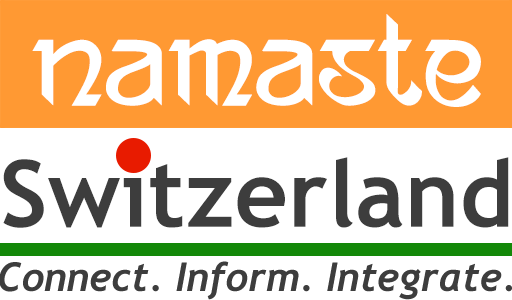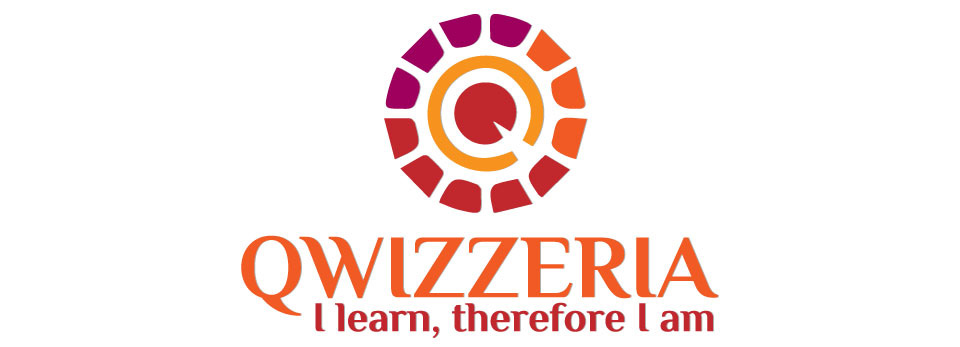Lausanne, summer of 2002 – it’s been 18 years, but the memories are as fresh as from yesterday. Ujjaini Roy has lived in Switzerland for 18 years, revisits memories from her first summer in Switzerland.
I flew down to Switzerland with my newlywed husband in the winter of 2001, in December and bang in the middle of a snowstorm. Our flight had been circling over the Zürich Airport for a good 30 minutes before it was cleared for landing.
Winter is my favourite season and I was thrilled to be welcomed into this new world with the pristine white landscape all around. It was a winter wonderland! It was magic!
As my husband was born and brought up in Switzerland, he was still serving the Swiss Army and had to leave for his military stint in February. This was a good time and opportunity for me to explore the town and the city of Zürich and make new friends.
Soon, we moved into spring and then to summer; just like that six months were gone. Since we didn’t get much time to spend with each other because of his army duties, my husband and I now planned a road trip to the French part of the country. Our road trip included Einsiedeln, Rheinfalls (Stein Am Rhein), Engelberg, Neufchâtel, Yverdon and Lausanne.
We spent a weekend in Lausanne and went off the beaten path to see if we could find anything unusual.
We are hopeless when it comes to planning. We’re not people who leaf through guidebooks and put together a must-do list. We usually tend to ask the locals for information or just search the Internet.
We could manage to gather some information and thought it best to explore certain areas of the city on foot as it’s the only way to experience street art, cool bars, or quirky sights.
On the first day in Lausanne, we went for a walking tour with a local guide. This provided a great overview of the city and gave us lots of ideas to explore independently the following day.
If you can look beyond the manicured streets and postcard-perfect lakefront of Lausanne, you will find a quirky spirit to the city. Lausanne is surrounded by amazing destinations like Montreux (known for the Jazz festival) and Vevey (famous for its Charlie Chaplin Museum) and much more.

Le Flon
The story of how this neighbourhood came to life is really interesting. Lausanne is built on three hills. Between two of these hills, the river Flon used to flow, until it was covered to build the railway and a warehouse district in the 19th century. The once green valley became known as ‘Le Flon’, after the river.
Around 1999, the district was torn down and redeveloped. Le Flon is now the heart of Lausanne, which beats to the rhythm of a modern and innovative living space. It is the architectural success of the city: this district of old warehouses, which begins at the Place de l’Europe, has been rehabilitated into a living area with a multitude of restaurants, bars, clubs, shops, cinemas, bowling and exhibition spaces.
Some years ago, the Lausanne hip-hop movement was very active. Today, the activities are less alternative, but Le Flon remains very popular, not only for the shops, bars, restaurants, cinema and nightclubs but also for a daytime walk, to see some interesting architecture. There is plenty to do.
Just off the Voie du Chariot, Le Flon’s main pedestrian section with a fountain symbolising the underground river is some interesting street art that lends a nice splash of colour.
In the winter, you can enjoy the ice rink, and in the summer, the sandy beach.

Library Basta!
Somewhere between Le Flon and the old city is the Librairie Basta!
In the wake of May 1968, a small Maoist bookstore had opened in the rue du Petit-Rocher. This is, in short, one of the founding acts of the Basta Bookstore. The small bookstore is one of the rare gems to have survived forty years, in spite, of the current digital turmoil, which is shaking up the world of books. It is a bookshop selling books on politics, history, culture and more. We also came across really nice stationery products and books about Lausanne.
Library Basta! is not just a bookshop, though. It’s a place to exchange opinions, talk about politics and culture or just relax and enjoy a cuppa.
Most books are in French, of course.
For music lovers, the gallery has given way to an independent record store, Obsession Records. Obsession has been managed by Eric Jeantet since it’s opening in 1990. It stores vinyl, CDs, and DVDs. In terms of style, the menu is wide: rock, folk, pop, electro, hip-hop, jazz, experimental, contemporary, or world music.
Obsession’s speciality is in its discovery, a spark of originality, measured circulation and enigmatic beauty.
There were about fifteen comparable bookstores in Lausanne but today the only bookstores that remain are Basta! and Payot.
Basta! and Obsession Records, Rue du Petit-Rocher 4, Lausanne
Collection Musée de l’Art Brut, Lausanne
 This is the only unique gallery in the world which exhibits the works of artists with no training in arts. These include individuals with mental issues or intellectual impairments, convicts, people that suffered serious traumas and/or simple enthusiasts.
This is the only unique gallery in the world which exhibits the works of artists with no training in arts. These include individuals with mental issues or intellectual impairments, convicts, people that suffered serious traumas and/or simple enthusiasts.
Exhibits include calligraphy, paper maché figures, an ‘aquarium’ made of shells, a handmade chair weighing over 20 kilos, and rifles built with salvaged material.
Most exhibits are accompanied by a description of the artist’s life.
Many are reported to enter an immaterial state of being during their art-making process, transcending between space and time and often creating incredible works of art.
This museum, when I had first visited in the summer of 2002, had a profound effect on me.
It made me question the very definition of ‘Mental-Illness’ and what we define as ‘Normal’.
This art gallery takes you on a fascinating journey around the mysteries of the human mind.
Photography is strictly forbidden inside the museum, so, there are no images to show.
Cathedrale de Notre Dame
 Lausanne’s medieval Notre Dame Cathedral is the largest in Switzerland and is the crowning glory of the city on the slopes above Lake Geneva. Built in the 12th and 13th centuries in the Gothic style, the church is home to the medieval Imago Mundi rose window.
Lausanne’s medieval Notre Dame Cathedral is the largest in Switzerland and is the crowning glory of the city on the slopes above Lake Geneva. Built in the 12th and 13th centuries in the Gothic style, the church is home to the medieval Imago Mundi rose window.
Two things about the Cathedrale de Notre Dame
One, the beautifully painted southside portal, with statues of apostles, saints and evangelists. You can see the portal as it welcomed pilgrims and worshippers looking almost like when it was built 800 years ago.
Second, the Cathedral’s watchman, calling out the hours, since 1405. The cathedral still maintains the tradition of a night-watchman (guet) calling the hour every night. Every night from 10 p.m. to 2 a.m., you can hear the watchman calling “C’est le guet, il a sonné dix, il a sonné dix.” (This is the watchman! The bell has tolled 10. The bell has tolled 10).
The “watchman” tradition originated to prevent city fires in medieval times. The Cathedral is on top of the highest hill in Lausanne and from the top of the Cathedral tower, the “watchman” was able to get a bird’s eye view. Renato Häusler is the current “watchman”, for Lausanne, keeping the 600 years tradition still alive. According to David Payot, a member of Lausanne’s municipal council, “this is a way of making history come alive!”
The tower can also be climbed by visitors for views over the city.
Sauvbelin Park
This is a park on the shore of Lake Sauvabelin in Lausanne, atop one of the city’s hills is perfect for everyone. Stroll along the little lake and visit the farm animals or sit on the water terrace for a little lunch. In the summer, you can also take a little boat ride around.
Our favorite part was the tower just a short walk from the lake. You can climb to its observation deck. Entrance is free. You have to climb a spiral staircase with 302 steps and you are rewarded with a panoramic view of the city – the beauty of the fields, the picturesque Alps and Lake Geneva.
It is even higher than the Lausanne Cathedral.
La Ficelle
I had to include this because Lausanne is the smallest city in the world to have an underground train system, called ‘La Ficelle’ (the string). Despite being only 4.2 km long, the Lausanne Metro has the highest altitude difference in the world, with 338 meters between Les Croisette, the highest station, and Ouchy, the lowest on the lakeshore.
The metro goes uphill (or downhill) and some of the platforms like Lausanne Gare are also built on a slope.
Commune Livre d’Ouchy

If you take the downhill metro from the Lausanne metro station all the way to the end, you’ll end up in Ouchy, on the shore of Lake Geneva.
Historically, Ouchy was always a separate village, and being a port, it has enjoyed special autonomy status since 1144. In 1780, the village was annexed to Lausanne and given the status of ‘commune livre’.
Ouchy, calls itself, ‘commune livre et indépendant’ with their own government, flag, passport and even their own vineyard.
In summer, you can take a sunset cruise on La Vaudoise, the Commune’s very own tall ship, run and managed by the ‘Confraternity of Pirates’.
Olympic Museum

This is a ‘must-see’. A little further down the street from Ouchy, you’ll find the Olympic Museum, one of Lausanne’s main sights; it’s simply brilliant.
Lausanne is dubbed ‘the Olympic city’, as it houses the International Olympic Committee.
I admit, when I heard, ‘Olympic museum’, I thought..’ meh’..and will be out of there probably in an hour. Four hours later, we were watching videos of past opening ceremonies and champions, and trying to beat Bolt’s record on the 100 meter track in the museum park.
The museum offers you aplenty and the opportunity to learn about Olympic history and spirit and basically, to have fun.


Summer Activities and Cultural Events
The cultural life of Lausanne impresses with a variety of interesting and diverse events. Many different festivals, fairs and expositions, culinary and sporting events are held throughout the year. The most interesting and popular event among tourists is the city festival, “Festival de la Cite”, established more than 50 years ago. Initially, the fest was dedicated to beer.
During the festival, the best brewing companies presented their products and the city folk enjoyed their favorite drink with festive treats.
Since the 1970s, the festival has been revised. Every year since then, its programme has included new events.
During the fest, the visitors can attend concerts of classical music and rock bands, circus shows, theatrical performances, sports events and stage plays for kids. The festival schedule is rich and diverse, catering to everyone’s needs and fancy.
The main feature of this city festival is that the events are absolutely free for all. The major part of the concerts and performances are held mostly in the old town.
About the Culinary Scene, Lausanne

Eating out anywhere in Switzerland isn’t a cheap affair and Lausanne is no different.
It’s pricey, but filling and satisfying, especially, if you love cheese.
The culinary scene in the west of Switzerland is really interesting as you can get to experience the best of both Swiss and French cuisine, including some gorgeous locally produced wines.
We enjoyed a Swiss favourite – the wonderful fondue at La Pinte Besson, a restaurant dishing out steaming melted cheese since 1780.
La Pinte Besson
Rue de l’Ale 4 – 1003 Lausanne, T +41 21 312 59 69
Café Romand is a traditional Swiss brasserie, which has been serving up specialities in French-speaking Switzerland since 1951. It’s the best place in town to try local dishes, such as a platter of dried meats, cheeses and gherkins from canton Valais, perch filets from Lake Geneva and papet vaudois, a truly local dish of sausage, leeks and cabbage.
Of course, cheese figures strongly on the menu and it’s a good place to dig into a moitié-moitié fondue or a raclette.
Café Romand
Place Saint-François 2, 1003 Lausanne
Tél. +41 21 312 63 75
So go on – plan a trip to Lausanne and discover the city with all its splendor.
About the Author
 “Traveler at heart, photographer, decor addict, rookie chef and volunteer contributor for Namaste Switzerland and IndoSwiss Kids’ Chronicle”
“Traveler at heart, photographer, decor addict, rookie chef and volunteer contributor for Namaste Switzerland and IndoSwiss Kids’ Chronicle”
Disclaimer: Opinions expressed belong solely to the writer. Rules, regulations and offerings are subject to change with time. Namaste Switzerland does not undertake any financial/reputational/legal/misrepresentational or other obligation or liability. Please note: systems and laws change.












